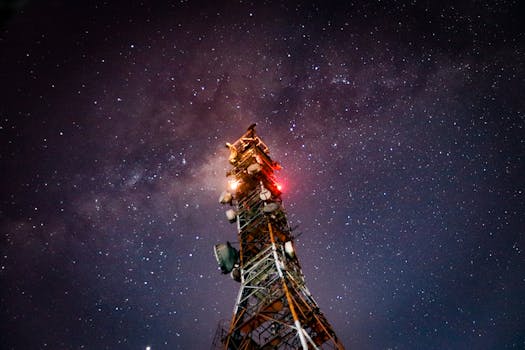
MEO Satellites: Revolutionizing Global Communication with Medium Earth Orbit Technology – MEO Satellites
MEO satellites, or Medium Earth Orbit satellites, are a type of satellite that operates in an orbital altitude of approximately 2,000 to 36,000 kilometers above the Earth’s surface. This range allows MEO satellites to provide a unique combination of coverage, latency, and capacity, making them an attractive option for a variety of applications, including navigation, communication, and Earth observation.
The use of MEO satellites is becoming increasingly popular, particularly in the field of satellite communication. By operating in a medium Earth orbit, these satellites can provide a higher level of connectivity and faster data transfer rates compared to traditional geostationary satellites. This is because MEO satellites have a lower latency and can provide a more direct connection to users, resulting in faster and more reliable communication.
One of the key benefits of MEO satellites is their ability to provide global coverage. Since they operate in a medium Earth orbit, they can cover a large portion of the Earth’s surface, making them ideal for applications such as global navigation satellite systems (GNSS) and satellite communication networks. Additionally, MEO satellites can provide a higher level of redundancy and backup capacity, ensuring that communication services remain available even in the event of a failure or outage.
Another advantage of MEO satellites is their flexibility. They can be used for a variety of applications, including fixed satellite services, mobile satellite services, and broadcast satellite services. This flexibility, combined with their ability to provide global coverage and fast data transfer rates, makes MEO satellites an attractive option for a wide range of industries, including telecommunications, aviation, and maritime.
However, MEO satellites also face some challenges. One of the main challenges is the need for a large number of satellites to provide global coverage. This can be a complex and expensive endeavor, requiring significant investment in infrastructure and technology. Additionally, MEO satellites must also contend with interference from other satellites and terrestrial systems, which can impact their performance and reliability.
Despite these challenges, the use of MEO satellites is expected to continue growing in the coming years. As demand for global connectivity and fast data transfer rates continues to increase, MEO satellites are likely to play an increasingly important role in meeting this demand. With their unique combination of coverage, latency, and capacity, MEO satellites are poised to revolutionize the way we communicate globally.
Applications of MEO Satellites
MEO satellites have a wide range of applications, including navigation, communication, and Earth observation. In the field of navigation, MEO satellites are used to provide location information and timing signals, which are essential for a variety of applications, including aviation, maritime, and land transportation.
In the field of communication, MEO satellites are used to provide broadband internet access, mobile phone services, and other communication services. They can also be used to provide backup capacity and redundancy for terrestrial communication networks, ensuring that communication services remain available even in the event of a failure or outage.
In the field of Earth observation, MEO satellites are used to collect data on the Earth’s surface and atmosphere. This data can be used for a variety of applications, including weather forecasting, climate monitoring, and natural resource management.
Future of MEO Satellites
The future of MEO satellites looks bright, with a number of new constellations and systems currently in development. One of the most notable examples is the O3b constellation, which is being developed by Other 3 Billion. This constellation will consist of a network of MEO satellites that will provide broadband internet access to underserved communities around the world.
Another example is the Amazon Kuiper System, which is being developed by Amazon. This system will consist of a constellation of MEO satellites that will provide broadband internet access to a wide range of customers, including consumers, businesses, and governments.
As the use of MEO satellites continues to grow, we can expect to see a number of new and innovative applications emerge. From providing global connectivity and fast data transfer rates to enabling new technologies such as the Internet of Things (IoT) and 5G, MEO satellites are poised to play an increasingly important role in shaping the future of communication and technology.
Conclusion
In conclusion, MEO satellites are a type of satellite that operates in a medium Earth orbit, providing a unique combination of coverage, latency, and capacity. They have a wide range of applications, including navigation, communication, and Earth observation, and are expected to play an increasingly important role in meeting the growing demand for global connectivity and fast data transfer rates.
While MEO satellites face some challenges, including the need for a large number of satellites to provide global coverage and interference from other satellites and terrestrial systems, their benefits make them an attractive option for a wide range of industries. As the use of MEO satellites continues to grow, we can expect to see a number of new and innovative applications emerge, from providing global connectivity and fast data transfer rates to enabling new technologies such as the Internet of Things (IoT) and 5G.




